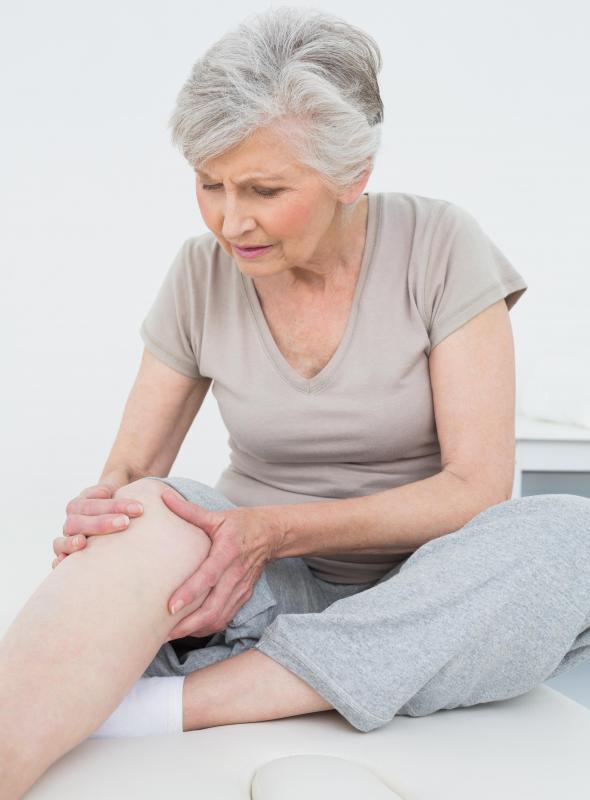At TheHealthBoard, we're committed to delivering accurate, trustworthy information. Our expert-authored content is rigorously fact-checked and sourced from credible authorities. Discover how we uphold the highest standards in providing you with reliable knowledge.
What Is the Difference between Osteomalacia and Rickets?
In general, there is no difference between osteomalacia and rickets. They are both disorders in which softening and weakening of bones occurs, usually due to a lack of vitamin D. Vitamin D is necessary for the body to properly absorb calcium and phosphorus, which in turn, makes bones strong. Thus, when there is a lack of vitamin D in the body, bones soften and weaken, causing the disorder known as both osteomalacia and rickets. Rickets is the term used to describe the disorder when it occurs in children and osteomalacia is the term used to describe the disorder in adults.
The human body obtains vitamin D through diet and exposure to sunlight. Those who acquire osteomalacia or rickets because of their diet include those who do not have a sufficient intake of milk products and those who are vegetarian. In addition, infants who breastfeed can sometimes develop rickets because breast milk does not provide enough vitamin D. A lifestyle that involves little to no exposure to sunlight can also cause osteomalacia or rickets to occur. These individuals acquire the disorder by staying indoors too much or by living in a climate with little sunlight.

Osteomalacia can also occur as a result of underlying medical conditions that interfere with the body’s ability to absorb or process vitamin D. A person with Celiac disease, for example, has a small intestine with a damaged lining. This damaged lining is unable to absorb vitamin D as efficiently as a healthy lining, causing the body to become vitamin D deficient. Other medical conditions that can lead to osteomalacia or rickets include cystic fibrosis, kidney or liver problems, and some surgical procedures as well, such as gastrectomy. In addition, medication used for the treatment of seizures can also cause the disorder to occur.

Symptoms of these disorders include bone pain and muscle weakness; examples of bone pain include pain in the legs, lower spine and pelvis. Rickets can also cause children to exhibit delayed growth, as well as skeletal deformities, such as bowed legs. Treatment for both conditions involves taking vitamin D supplements, as well as calcium or phosphorus supplements if needed; this treatment method usually corrects the condition. Underlying conditions also play a role in treatment of both disorders though, and treatment of these conditions is essential in helping with vitamin D deficiency. Lastly, braces or surgical procedures can correct some skeletal deformities in children.
AS FEATURED ON:
AS FEATURED ON:


















Discussion Comments
@MissDaphne - I thought that, too. I was really resistant to giving my little ones vitamin D drops because I thought my milk should have enough.
But my pediatrician explained that babies aren't designed to get vitamin D from breast milk - they're supposed to get it from the sun. But now we know that too much sun is bad for your skin! So babies who do not get much sun, especially those born in the winter, may need to take vitamin D supplements. Vitamin D is not expressed much in breast milk.
Since the Industrial Revolution, most of us have needed vitamin D supplements since we're not out there working in the fields any more! Vitamin D started being added to the milk when people suddenly staying inside a lot and rickets became a huge problem because of the vitamin D shortage that causes.
I don't understand how it's possible for breast milk to not provide enough vitamin D. Our ancestors evolved with nothing but breast milk as baby food; they certainly didn't have those little drops. Wouldn't they all have gotten rickets if breast milk was so low in vitamin D?
Sounds like maybe these days, moms aren't getting enough in their diets.
Post your comments